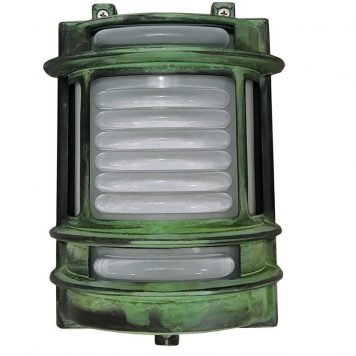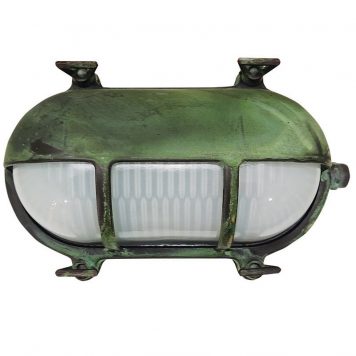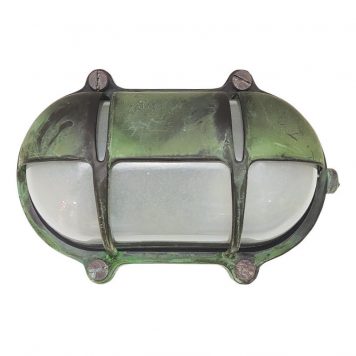Patina
PATINA (probably from the Latin word for a flat dish, from patere, to lie open; cf. “paten”), a thin coating or incrustation which forms on the surface of bronze after exposure to the air or burial in the ground. It is looked on as a great addition to the beauty of the bronze, especially when it is of the green colour found on antique bronzes. By extension, the word is applied to the discoloured or incrusted surface of marble, flint, &c., acquired after long burial in the ground or exposure to the air, and also to the special colour given to wood surfaces by time.
PATINA (/pəˈtiːnə/ or /ˈpætɪnə/) is a thin layer that variously forms on the surface of copper, brass, bronze and similar metals and metal alloys (tarnish produced by oxidation or other chemical processes) or certain stones[1] and wooden furniture (sheen produced by age, wear, and polishing), or any similar acquired change of a surface through age and exposure.
See also:
Patina, Verdigris – Outdoor Lights
External links:
Patina – Encyclopædia Britannica
Patina – Wikipedia
Showing all 7 results
-

Outdoor Wall Lantern, Exterior lights. Made of Brass in Green Oxidized Finish. ART BR406BRGOX
235.00 € Add to cart -

Exterior Pole Lamp. Outdoor lighting ideas. Yard lights. Made of Brass in Verdigris finish. ART BR406-28BRGOX
150.00 € Add to cart -

Solid Brass Wall Lights, Decorative style. Made of Brass in aged, patina finish. ART BR453BRGOX
195.00 € Add to cart -

Coastal Style Outdoor Lighting. Wall sconce. Made of Brass in aged, patina finish. ART BR435BRGOX
110.00 € Add to cart -

Oval Outdoor Bulkhead Light in Oxidised Green Finish. Made of Brass, ART BR435-03BRGOX
110.00 € Add to cart -

Nautical themed outdoor light. Decorative Design Made of Brass in Oxidized Green Finish. ART BR419BRGOX
145.00 € Add to cart -

Nautical Style Outdoor Lighting. Made of Brass in aged, patina finish. ART BR408BRGOX
135.00 € Add to cart
Showing all 7 results

